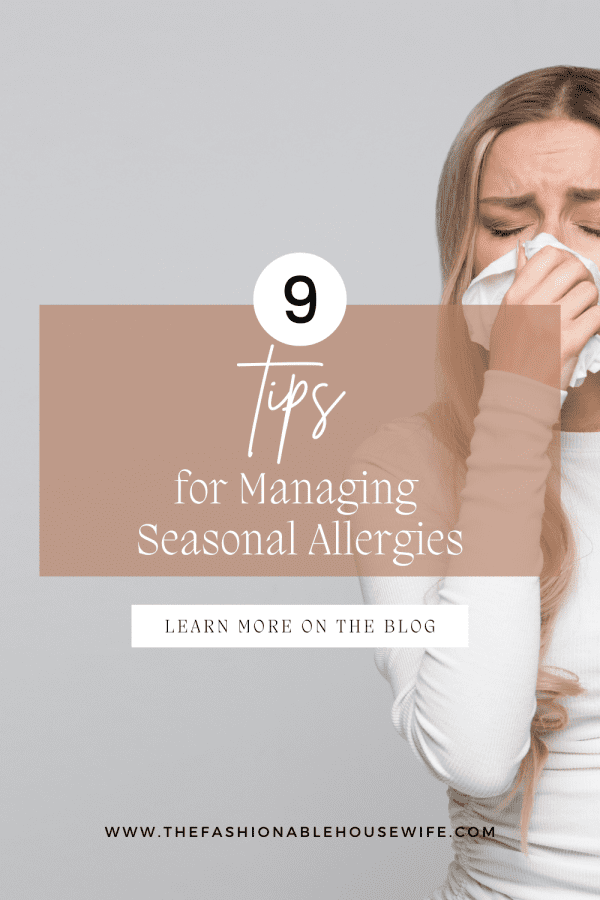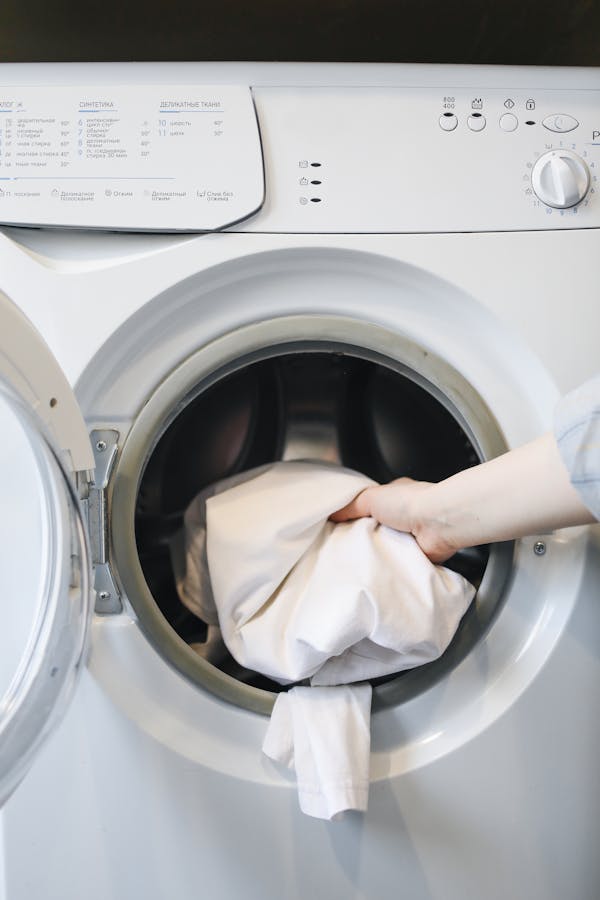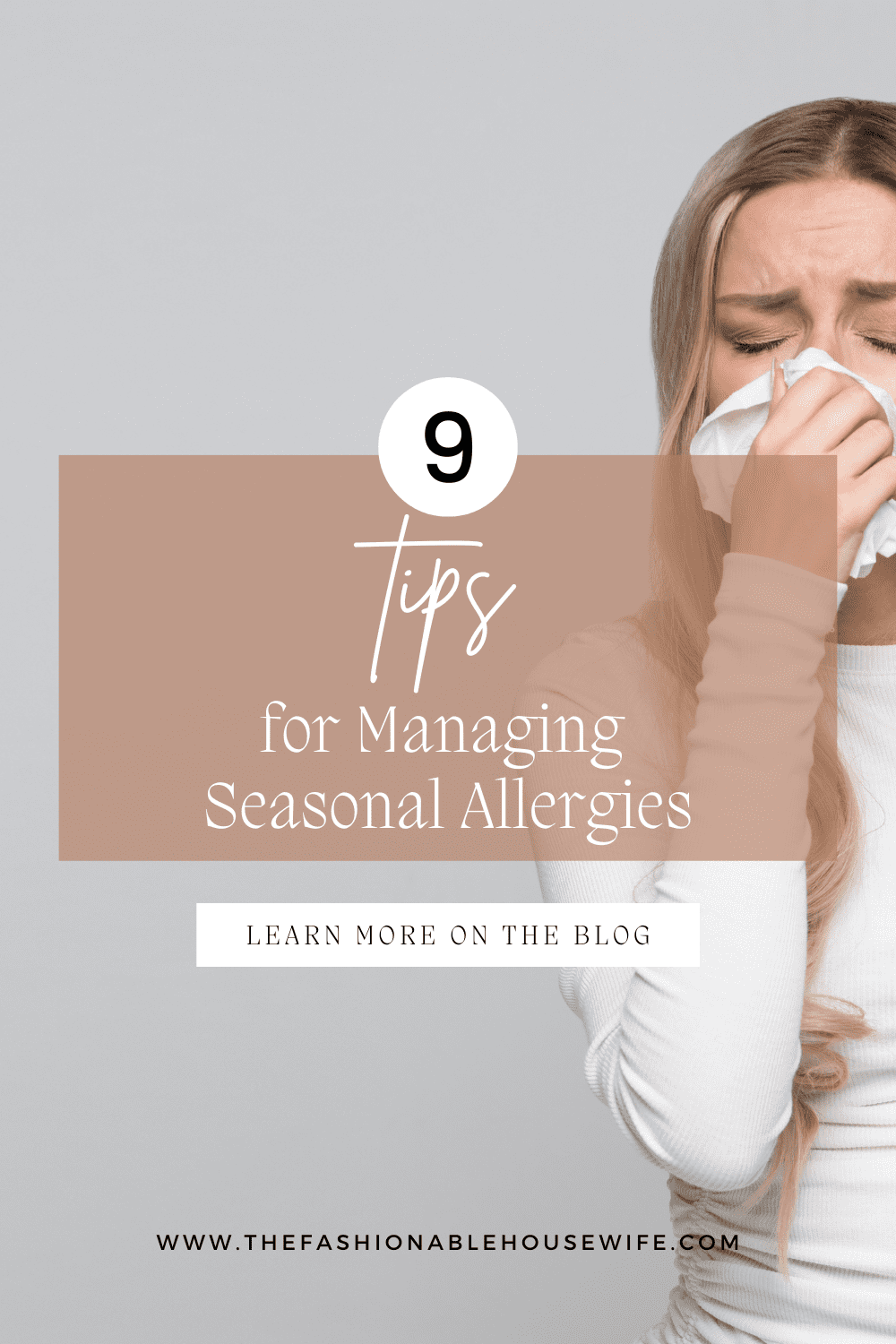9 Tips for Managing Seasonal Allergies

Spring is a sign of renewal after the cold winter temperature. People look forward to warmer weather, more sunlight, and blooming flowers. But for millions of people, it means the return of seasonal allergies caused by pollen, dust, and other allergens in the air. For severe symptoms, Oklahoma residents can head to urgent care in OKC for relief.
Over-the-counter medicines can also be effective. But how else can you manage your seasonal allergies? Check out these 9 tips that will make you feel like yourself in no time.
1. Avoid Allergy Triggers
If you’re allergic to cats, you’ll likely do your best to avoid interacting with the felines. Avoiding what triggers your allergic reaction is one of the simplest ways of managing allergies. While it is impossible to avoid all seasonal allergy triggers, there are some things you can avoid.
For example, when pollen levels are high, limit outdoor time and stay indoors, especially during the afternoon when they peak. If possible, delegate lawn mowing and other yard work that stirs up pollen.
2. Close Windows
According to the CDC, 1 in 3 adult Americans reported suffering from certain types of allergies. Seasonal allergies and food allergies were among the top types of allergies. Tree pollen and grass pollen are the most severe allergens. Tree pollen is at its highest in March and April, while grass pollen is heaviest in June and July. One easy way to keep your allergies in check is to keep your windows closed to keep pollen out.
Creating a barrier—a closed window in your home or car—minimizes your exposure to the irritants that trigger seasonal allergy symptoms. During allergy season, rely on air conditioning with a good filter to provide cool air while also filtering out outdoor allergens.
3. Check A Pollen Calendar
Seasonal allergies can occur year-round because of the different types of pollen that comes with each season. Even in winter, there is a small amount of pollen from cedar and juniper trees. A visual pollen calendar can help remind you when the type of pollen that triggers your allergies is at its peak. It can help people with seasonal allergies plan for and avoid pollen-related symptoms.
Knowing when specific types of pollen are most prevalent in your area allows you to proactively take steps to minimize exposure during peak pollen times. Proactive steps include taking medication beforehand and staying indoors. A pollen calendar helps you plan ahead to avoid the worst seasonal allergy symptoms by knowing when to expect high pollen levels.

4. Clean Regularly
As noted above, closing your windows can help stop pollen from taking over your house. But there’s always some pollen getting in. Cleaning regularly can help reduce allergy attacks while you’re at home. Brooms actually kick more allergens into the air. Use a vacuum instead. Don’t forget to dust the window blinds and other areas that collect allergens.
Many people forget the importance of air filters in maintaining home air quality. Air filters trap dust and allergens but can circulate them back into the air if left too long, making it essential to check and change the filters regularly as needed.
5. Stay Hydrated
The symptoms of seasonal allergies are easy to spot: sneezing, runny nose, congestion, and itchy and watery eyes. Staying hydrated can help with seasonal allergies by thinning mucus and reducing dryness in the nasal passages. This makes breathing easier and clears allergens from the nose and throat.
Dehydration can trigger allergies, so drinking plenty of water each day can be especially beneficial when you’re struggling with allergies. Consider electrolyte drinks to replenish lost minerals and fluids if water isn’t enough. It’s crucial to support your body’s immune system to help your body respond to the allergens.
6. Use A Dehumidifier
Dehumidifiers reduce the amount of moisture in the air, which is known to help with dry skin, irritated airways, and other health issues. They can also help combat seasonal allergies in several ways. They can reduce inflammation and soothe irritation in the nose and throat, helping with chapped lips and other allergy side effects.
These machines also reduce humidity levels, making the environment less favorable for allergens to thrive and minimizing allergy reactions. Maintaining a relative humidity level between 30% and 50% is generally considered best for allergy sufferers.
7. Wash Away Allergens
When you spend time outside, pollen can stick to your clothing, hair, and skin. If not washed properly, pollen can also transfer to furniture and bedding. At the peak pollen season, change and wash your clothes immediately after returning home from the outdoors. To remove allergens, wash bedding, towels, and clothes in the hottest water setting possible.

8. Wear A Mask
Wearing a mask while outdoors in the warmer months doesn’t sound fun, but allergies don’t either. Masks can help prevent large pollen particles from entering your airway, triggering painful and uncomfortable symptoms. However, masks may not be enough to combat smaller pollen particles. It’s important to wash your mask after each use to prevent pollen from spreading from the mask to your home or car.
9. Watch The Weather
A pollen calendar is a good start, but it won’t tell you the day-to-day weather forecast. Stay on top of the weather through a phone app or your favorite TV weathercaster. High winds can spread pollen, making seasonal allergy symptoms worse. Many weather forecasts in the warmer months include a pollen watch to inform those afflicted by seasonal allergies.
Knowing the day’s forecast can help you play outdoor activities on days when pollen levels are low. Pollen is at its lowest after rainfall and on less windy days. Reducing your exposure to pollen will help minimize your symptoms.
Allergies Don’t Have to Impact Your Day
Rising temperatures and changing weather patterns can lead to longer pollen seasons and increased pollen levels, making outdoor and indoor allergies worse for many people. If left untreated, severe allergies can lead to complications like sinus infections, ear infections, and asthma attacks. These nine tips can help reduce the disruptive and uncomfortable symptoms of seasonal allergies.

